How to Store Household Linen (However Little Space You Have)
From stolen corner to dedicated cupboard, giving linen a permanent home makes sense – and is easier than you might think
Eva Byrne
17 November 2017
I'm an Architect + House Consultant based in Dublin. I specialise in House Consultations to maximise Space, Light and Storage in your home. Whether you are planning a Renovation, Extension or New Build project, I aim to help you get your project off to the best possible start and to make best use of your cents and centimetres.
I'm an Architect + House Consultant based in Dublin. I specialise in House Consultations... More
Household duvets, sheets, pillows and towels can place quite a toll on the storage regime in the average home. It’s not only about where, but also about how best to store these bulky items. Every centimetre counts and, in some cases, smaller really can be more beautiful.
This article is from our Most Popular stories file
This article is from our Most Popular stories file
Open up in the bathroom
Press any leftover space in the bathroom into use by creating open shelves for towels and bath sheets – even a narrow unit like this one can hold a surprising amount.
Fold your towels to suit whatever sized space is available, with the folded edge facing outwards for maximum calm and order.
A good ventilation system in the room will address any potential issues with moisture from the shower and bath.
Press any leftover space in the bathroom into use by creating open shelves for towels and bath sheets – even a narrow unit like this one can hold a surprising amount.
Fold your towels to suit whatever sized space is available, with the folded edge facing outwards for maximum calm and order.
A good ventilation system in the room will address any potential issues with moisture from the shower and bath.
Borrow from the bedroom
If you lack space for a central closet, store linen for each bedroom on a room-by-room basis.
Make space in the upper shelves of a wardrobe or, where space permits, add a simple cabinet.
No walk-in? No problem: 10 clothes storage ideas for petite rooms
If you lack space for a central closet, store linen for each bedroom on a room-by-room basis.
Make space in the upper shelves of a wardrobe or, where space permits, add a simple cabinet.
No walk-in? No problem: 10 clothes storage ideas for petite rooms
Slide under the bed
Where space is tight, under-bed drawers will exploit valuable cubic centimetres for stowing linen or out-of-season clothing.
It will get dusty, so protect your possessions with dust sheets or vacuum bags.
Where space is tight, under-bed drawers will exploit valuable cubic centimetres for stowing linen or out-of-season clothing.
It will get dusty, so protect your possessions with dust sheets or vacuum bags.
Cosy up to the hot-water cylinder
Traditionally, household linen is kept in the cupboard containing the hot-water cylinder, typically located on the first-floor landing.
If you have an airing cupboard, exploit every centimetre to best advantage by fitting shelves with just 25cm clear vertically between each; you’ll squeeze in more linen than you would with shelves spaced farther apart.
Your piles of linen will also be shallower, making items at the bottom easier to access. And you’ll avoid stacks of towels and sheets toppling over whenever you want to retrieve an item.
Traditionally, household linen is kept in the cupboard containing the hot-water cylinder, typically located on the first-floor landing.
If you have an airing cupboard, exploit every centimetre to best advantage by fitting shelves with just 25cm clear vertically between each; you’ll squeeze in more linen than you would with shelves spaced farther apart.
Your piles of linen will also be shallower, making items at the bottom easier to access. And you’ll avoid stacks of towels and sheets toppling over whenever you want to retrieve an item.
Create a cupboard from scratch
If you’re planning a new home or redesigning significantly, try to leave space for a dedicated closet, preferably located off a landing or bedroom corridor.
Shelves just 45cm deep would be ideal, again spaced with 25cm clear between each.
If you’d like a walk-in closet, allow a minimum of 70cm in front of the shelves for passage. Otherwise, tall doors, reaching from floor to ceiling, will allow good access to the whole space. Make sure everything has a home, with rarely used or out-of-season items on the uppermost shelves.
If you’re planning a new home or redesigning significantly, try to leave space for a dedicated closet, preferably located off a landing or bedroom corridor.
Shelves just 45cm deep would be ideal, again spaced with 25cm clear between each.
If you’d like a walk-in closet, allow a minimum of 70cm in front of the shelves for passage. Otherwise, tall doors, reaching from floor to ceiling, will allow good access to the whole space. Make sure everything has a home, with rarely used or out-of-season items on the uppermost shelves.
Panel an alcove
A recess in the bathroom is another useful spot for hiding bathroom linen, and even bedding, if there’s space.
Full-height doors that conceal all the shelves will still allow good access, but take away the pressure of having to keep your linen in good order.
A recess in the bathroom is another useful spot for hiding bathroom linen, and even bedding, if there’s space.
Full-height doors that conceal all the shelves will still allow good access, but take away the pressure of having to keep your linen in good order.
Delve into drawers
Drawers will work well in a deeper closet, making even items at the very back accessible.
Add LED strips to shed light on your linen and make it easier to organise and retrieve.
Find a contractor to help with your project in the Houzz Professionals Directory
Drawers will work well in a deeper closet, making even items at the very back accessible.
Add LED strips to shed light on your linen and make it easier to organise and retrieve.
Find a contractor to help with your project in the Houzz Professionals Directory
Acquire a cabinet
The first floor landing or a corner of a large bathroom is a great place to locate a stand-alone linen cabinet.
Choose between open shelving, cupboards or drawers as suits your space and needs.
The first floor landing or a corner of a large bathroom is a great place to locate a stand-alone linen cabinet.
Choose between open shelving, cupboards or drawers as suits your space and needs.
Use the utility
Add shelves to the upper reaches of a utility cupboard or, as in this example, a small utility room, to niftily store linen as it’s laundered. Baskets will help with organisation.
10 ways to add kitchen storage without completely renovating
Add shelves to the upper reaches of a utility cupboard or, as in this example, a small utility room, to niftily store linen as it’s laundered. Baskets will help with organisation.
10 ways to add kitchen storage without completely renovating
Exploit the eaves
Make best use of otherwise dead eaves space with baskets and tubs for linen that slot in neatly.
Loft rooms are typically one of the warmer spaces, so your linen should stay fresh as well as easily accessible.
Tell us…
What are your tips (or frustrations!) with storing linen in your home? Share all in the Comments section.
Make best use of otherwise dead eaves space with baskets and tubs for linen that slot in neatly.
Loft rooms are typically one of the warmer spaces, so your linen should stay fresh as well as easily accessible.
Tell us…
What are your tips (or frustrations!) with storing linen in your home? Share all in the Comments section.
Related Stories
Gardens
How to Disguise Rubbish and Recycling Bins Outside Your Home
Need to hide unsightly bins in your garden or driveway? Take a look at these clever ideas for inspiration
Full Story
Storage
7 Ideas for Children’s Bookshelves
Need bookshelf or book storage ideas for your kid’s bedroom? Browse these stylish rooms for inspiration
Full Story
Housekeeping & Cleaning
How to Be More Green When You Clean
Refresh your cleaning routine as well as your home this year with these eco-friendly cleaning ideas
Full Story
Living Rooms
10 Excellent Ideas for Alcove Storage
By Kate Burt
Those spaces either side of your chimney breast – are you making the most of them? Read on to find out
Full Story
Bathrooms
How to Design a Bathroom That’s Easy to Clean
Want a clutter-free, sparkling bathroom? Follow this expert advice on how to cut down on cleaning time
Full Story
Housekeeping & Cleaning
10 Things to Remember While Decluttering
Fast-track the process and ease the stress by making a plan before you begin
Full Story
Storage
9 Things No One Tells You About Creating Storage in Your Home
By Kate Burt
Stuck for more storage? Look no further than our pros’ ideas for maximising space – beautifully
Full Story
Housekeeping & Cleaning
Organising? Don’t Forget the Essential First Step
Simplify the process of getting your home in order by taking it one step at a time. Here’s how to get on the right path
Full Story
Storage
7 Ideas for Acing Your Open-plan Room’s Storage
By Kate Burt
Open-plan living spaces come with their own specific storage challenges, but there are several ways to tackle them
Full Story
Storage
How to Achieve ‘Barely There’ Bedroom Storage
By Kate Burt
Let your bedroom feel serene by keeping your storage discreet
Full Story


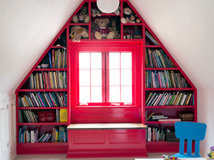
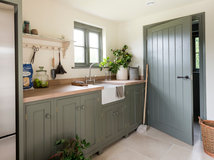

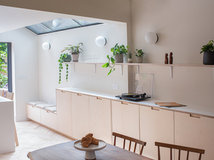
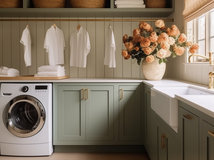












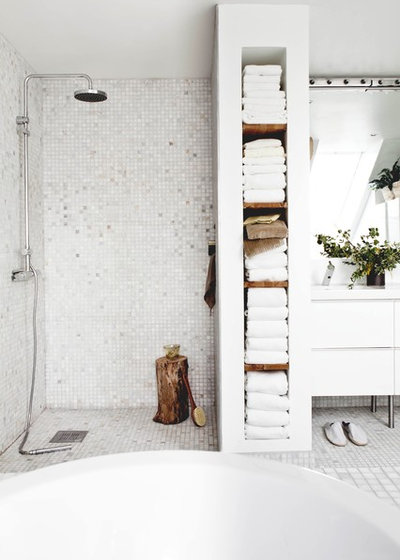

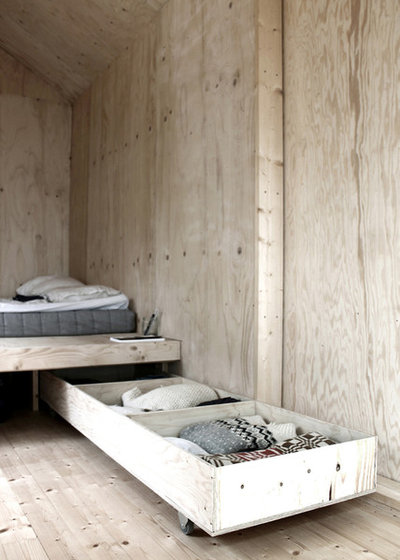
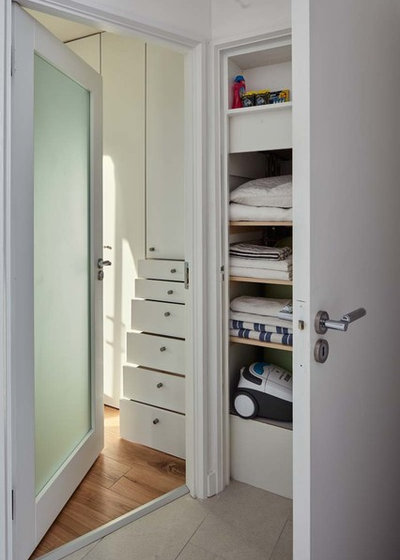
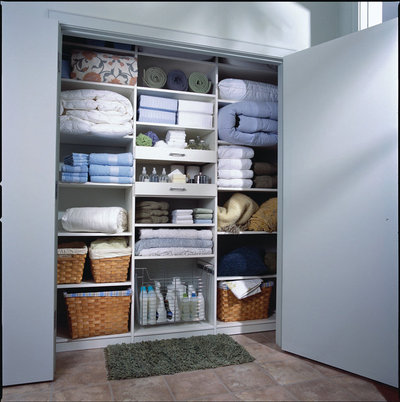
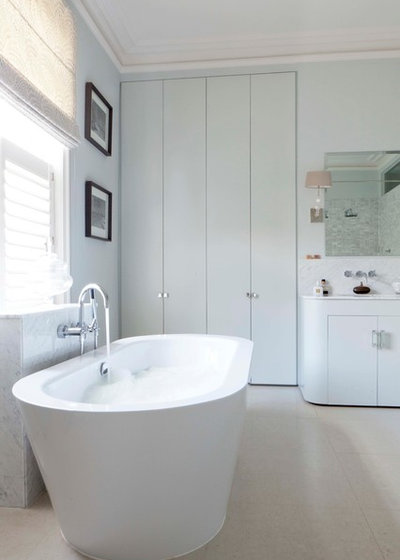
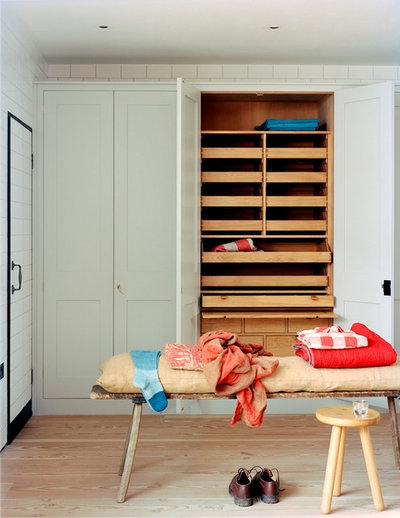
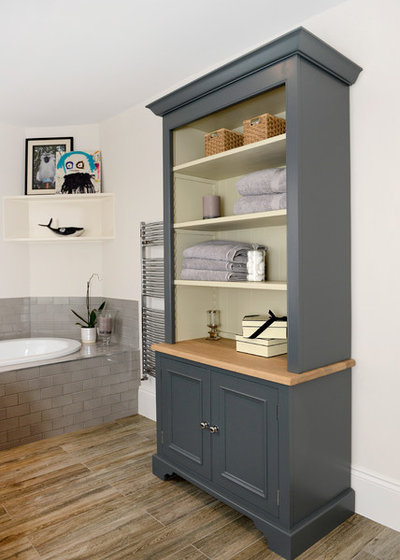
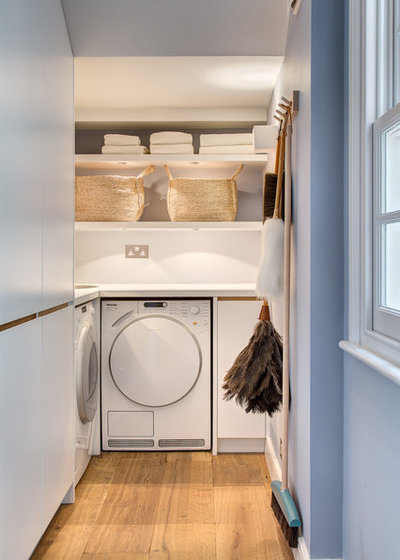
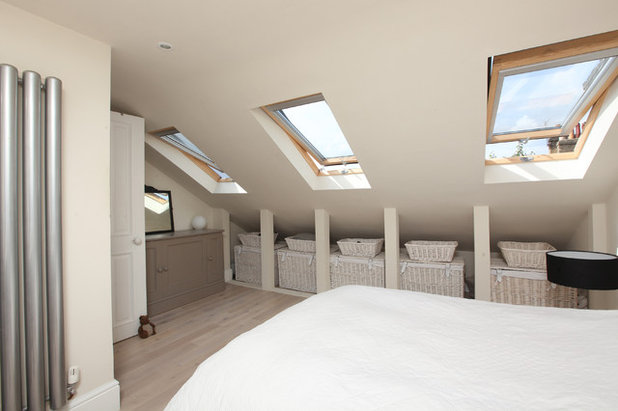




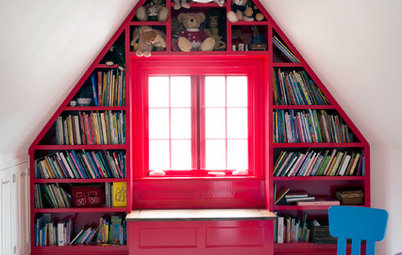
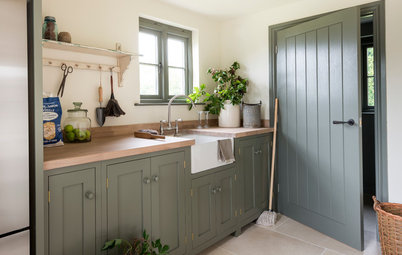
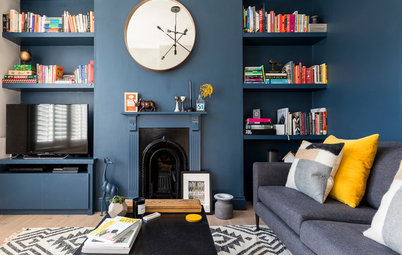
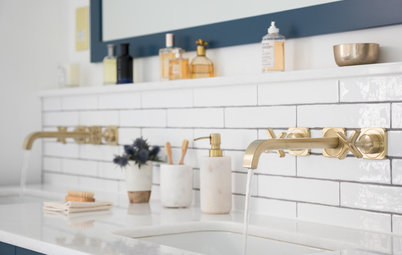
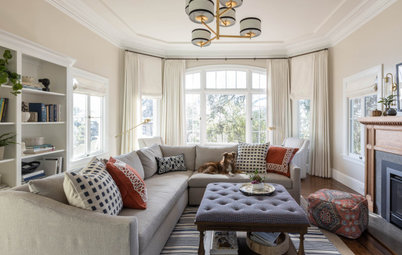
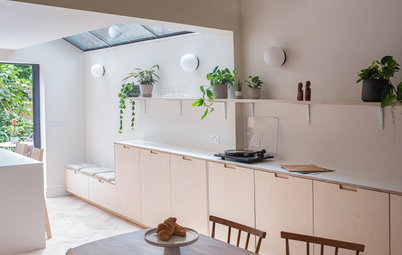
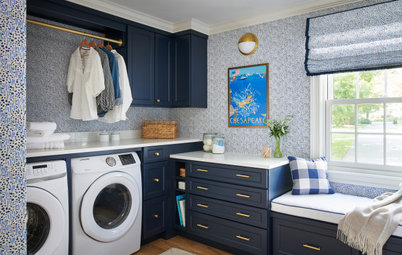
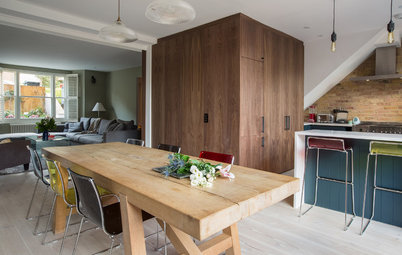
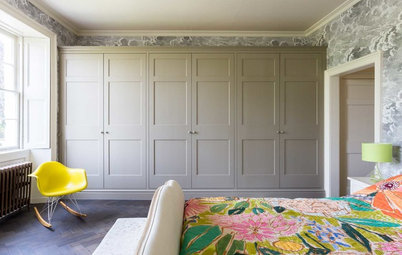
For our old Victorian house we bought an open shelved dresser for the bathroom, we store towels folded on the shelves . Drawers below are used to store toiletries, loo roll and cleaning items. For bed linens and throws we have a large, chunky set of 6 draws that has a thin back on, we've placed it in front of a large cumbersome looking radiator on the landing, it's a warm area so doesn't restrict heat but the bedding is always aired nicely.
We had our linen cupboard taken out to fit a shower in the bathroom. That left me with nowhere to put any towels and sheets. I have had to put them all on the floor of a wardrobe. It wouldn't be my first choice, but they do all fit and can be accessed easily.
Plain English is the winner. Just like gentlemen's wardrobes of old. It works.